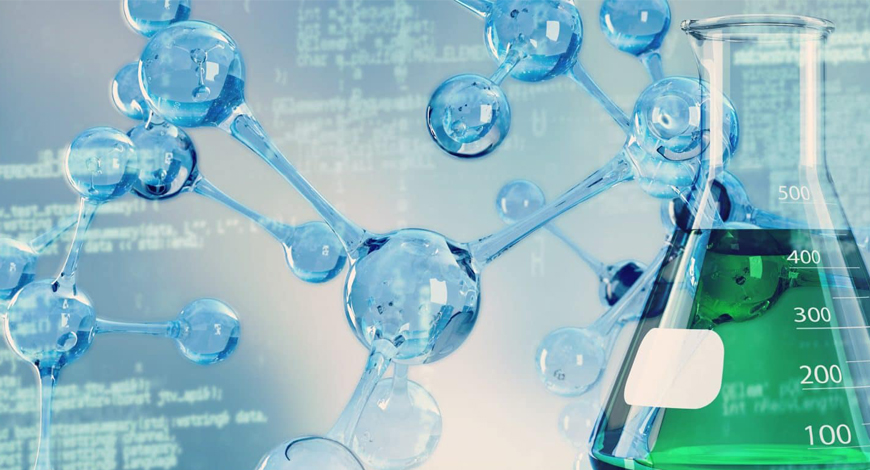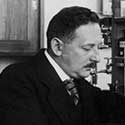Biochemistry Instruments and Reagents
On the road to automation

The laboratory of the future is a visionary concept, a goal that evolves as technology advances. Predictions are made, skeptics respond, and the vision reboots. The future offers few guarantees. But it also tends to develop over time rather than spring up overnight.
At the center of most lab operations is clinical chemistry, which performs tests on body fluids to assess human health and monitor chronic diseases. As is the case in other parts of the laboratory, clinical chemistry is becoming increasingly automated, with sophisticated instrumentation capable of performing hundreds to thousands of tests per hour. With increasing prevalence of lifestyle-related diseases like obesity and cardiovascular diseases, the field of biochemistry is likely to continue its prominent role in patient care.
When faced with new disease challenges, clinical laboratorians have typically managed to meet the diagnostic test needs for patients. With the emergence of the COVID-19 virus, manufacturers have quickly adapted their analyzers to keep pace with increased testing demands, and they have adopted new approaches that can accommodate changing test requirements.
Since the beginning of the pandemic, automated chemistry has moved up the priority list for many companies. The current situation means many companies are working at 25 percent lab capacity, but with completely automated synthesis, chemists sitting at home could program a robot to keep the lab working. It is something which people have been dreaming about for quite a while, but at the moment (the idea is) being taken more and more seriously by more and more people.
While choosing the right instrument is important to ensuring successful laboratory operations, it is only part of the equation. Laboratories today are looking for knowledgeable partners to help them apply proven continuous improvement strategies – borrowed from the manufacturing industry – to healthcare. A partner who is able to offer a total laboratory solution beyond instrumentation placement can help the laboratory to achieve its patient care and operational efficiency goals. This includes supporting the use of the instruments, identifying opportunities for automation, detecting workflow gaps, and helping to create efficiencies in managing resources.
Biochemistry has evolved greatly over time, driven by numerous factors – not the least being technological advancements in the world at large. Computers, microprocessors, and robotics paved the way for automation and cloud-based technology. With this, laboratories no longer consist of small standalone, manually operated units that performed a handful of tests; instead, they have transformed into bustling hubs featuring large integrated platforms that produce thousands of tests per hour with sophisticated information management systems. Future growth will build on this foundation, providing more capabilities in smaller-sized units. Instrumentation alone is only part of the equation. A strategic partnership can optimize laboratory performance, strengthening system advantages by integrating them into a total lab solution.
In modern times, automated testing systems have become increasingly popular, allowing users to transform their output amongst other perceived benefits, such as less labor required, decreased preparation time, and fewer input errors. Ultimately, the primary difference between automatic and manual systems is that in a manual system, a human tester is required on-site to provide the input for processes to run successfully.
Automating chemistry is not actually that new. It is something that people have been trying to do since the early 90s. But the last decade has seen an explosion in its use and in tools commercially available to carry it out. Now, it is pivotal for anyone in order to stay competitive in research and development and quality control.
Automation can be applied to almost any type of chemistry at any scale, from automating reaction conditions to using robots to manipulate reagents and carry out complete reactions.
 Carl Neuberg, father of modern biochemistry
Carl Neuberg, father of modern biochemistry
The name biochemistry was coined in 1903 by a German chemist named Carl Alexander Neuberg. However, work in this very living aspect of chemistry had started much earlier. His notable contribution to science includes the discovery of the carboxylase and the elucidation of alcoholic fermentation, which he showed to be a process of successive enzymatic steps, an understanding that became crucial as to how metabolic pathways would be investigated by later researchers.
As director of the Kaiser Wilhelm Institute of Biochemistry in Berlin, he was a driving force for establishing biochemistry as an independent discipline. The Biochemische Zeitschrift (Journal of Biochemistry), which he had founded in 1906, also contributed significantly to this effort. During World War I, Neuberg used his scientific expertise to support the war effort. He found a chemical procedure for an isolated glycerol substitute, which was produced on an industrial level for brake fluids and for the production of explosives. In the scientific community, Prof. Carl Neuberg was known for his research in the elucidation of the chemical reactions and intermediate products of alcoholic fermentation.
For medicinal chemists, the ultimate aim is to automate an entire workflow from design and synthesis through to assaying and analyzing – sometimes called the DMTA cycle (design, make, test and analyze). It is quite a challenge, but that is what they are trying to do. If one can take (the process) from 90 days down to 20 days, then that is a four-fold increase in the amount of candidates they can screen.
Speed is not the only advantage that automation provides. One gets increased productivity, increased yields, increased product purity, decreased rejects, decreased waste, and disposal costs. Automating reactions can increase safety by allowing greater control of reaction conditions. Plus, automated processes are also more reproducible.
Automation is unlikely to work for all biochemistry though. Handling solids is still pretty difficult. A Grignard reaction, for example, uses powdered magnesium, which is not a very safe thing to use.
Even where automation is possible, not everyone is sold on its advantages. There seems to be a fear that automation will not only supplant the role of the bench chemist but will also change the culture of everyday lab science.
Undoubtedly, automation will change the role of the biochemist, but perhaps that will be a good thing. It will free up chemists who typically do really laborious repetitive work to actually think about the science behind it. The balance of time chemists spend in the lab and in the office is likely to shift further toward the office, with chemists becoming information workers.
There may be less need for technician roles that are heavily based on repetitive laboratory work, but today most technicians are already highly knowledgeable specialists, and it is more likely that automation will create a whole host of new roles for maintaining and running automated systems.
While robots may not be coming for the biochemist’s job just yet, it may be a different matter once automation is coupled with advanced artificial intelligence (AI). In maybe 10–20 years’ time, one could see that there will be models with AI, where specialists basically send a request to a web server, that web server runs the chemistry that they want it to look at, and they get a result back. And it is all done in a fully automated way in a few hours.
One thing that is for certain is that automation continues to be the future of chemistry testing. Those within the science industry are constantly seeking to further innovate new technologies to improve productivity and efficiency within laboratories that strive to produce accurate results as fast as possible. Furthermore, as technology develops and fresh ideas enter the market, the automation of today will likely filter down into smaller laboratories, thus continuing the growth of an automated world of testing.
Perhaps the most common assumption regarding the future of testing within the laboratory is the birth of robotic lab assistants (robots). This shift began at the start of the millennium, with robots being introduced to laboratory settings to carry out previously manual tasks, such as manipulating samples, applying chemicals that aid the process of breaking up DNA into measurable segments, analyzing results, and feeding these results into a computer.
A study by the University of Liverpool in 2020, where a robotic lab assistant machine was created, found that a robot operated approximately 1000 times faster than a human over the course of a working week. The robot was in operation for 22 hours on each of the seven days, something that is simply not feasible when using human input without the uptake of high labor costs. Although robotic assistants create a common fear that there will no longer be a requirement for any human input, this is not true. The machine created by the University of Liverpool required programming and could not physically set up its own experiments. This development will act as a major benefit within laboratories in the future, as while the robotic assistant carries out the tedious, time-consuming tasks, scientists will have more time to carry out new research, which would not be possible in the present time.
As new automated technology becomes available in the future, it is likely that one will see a trickle-down effect with systems becoming more accessible and affordable to laboratories that differ in size and budget. In the past, limited supply and high costs meant that automated technology was often reserved for the benefit of the best funded laboratories around the globe. However, as the demand for automated machinery continues long term, an increase in supply – in addition to the larger laboratories seeking the latest innovations – will result in an increasingly wide range of automated testing across smaller laboratories, medical centers, schools, and universities. As this occurs, the number of laboratories depending solely on manual testing will further decrease, continuing the automated revolution to clinical testing.
The industry has witnessed a monumental shift in favor of automation since the work of Leonard Skeggs in 1956. Although this shift is not unique to the science industry, with much of the world favoring new technology over techniques and processes of the past, automated systems offer a range of benefits to both laboratories and the scientists who work there. Less preparation time, faster throughput and reduced human error mean that testing is now more efficient than ever before, improving results in faster times and, in turn, making testing a more profitable exercise due to increased output. While some see the introduction of robotic assistants as a threat to employment, it is deemed highly unlikely that laboratories will ever be fully able to function without human input. Therefore, the additional helping hand will reduce fatigue and bodily strain amongst those working in the laboratory, allowing for more time to conduct new research, which will again lead to new findings and further develop capabilities in the future.












